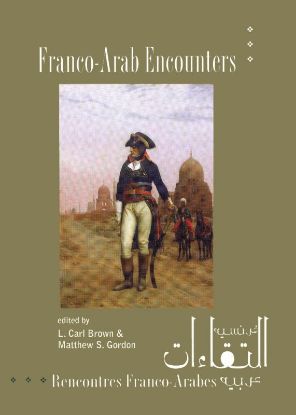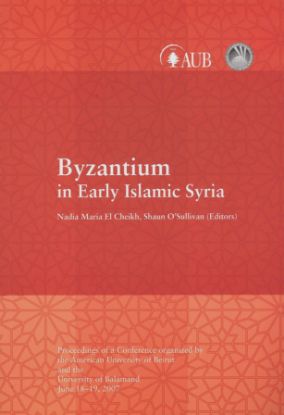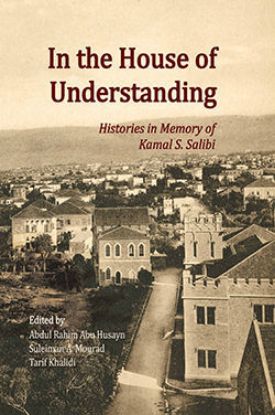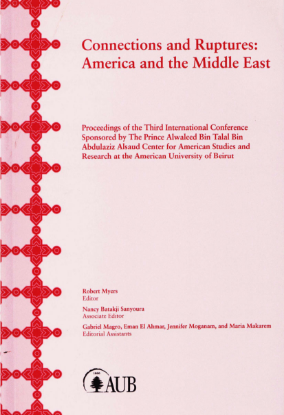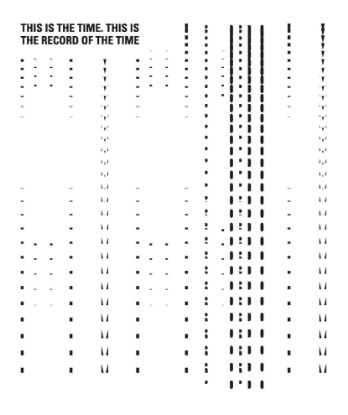Filter by price
Products tagged with 'history'
Franco-Arab Encounters
Over the last two centuries, the French dimension of Arab history has loomed large. The Arab world equally has played a major role in recent French history. Franco-Arab Encounters treats the many aspects of this interaction, tracing not just the political, but also the cultural, social, and intellectual. Twenty authors present these “encounters" in seven sections covering the Arab world, from Morocco to Saudi Arabia, over the past two hundred years. The book is dedicated to the memory of David C. Gordon, a pioneer and leader in this field of scholarship, who taught history at AUB from 1949 to 1955 and 1958 to 1975.
$20.00
Byzantium in Early Islamic Syria
This publication contains the proceedings of a 2007 conference organized by the Center for Arab and Middle East Studies (CAMES) at the American University of Beirut and the Center for Antiochene Studies at the University of Balamand. It is divided into two parts comprising two respective chronological eras, reflecting the intention of the conference to pursue a dual and comparative focus with the hope of throwing fresh light on both eras – the early Islamic period, from the Islamic conquests of Syria until the fall of the Umayyad dynasty (632–750), and the period of Byzantine reconquest of Syria (969–1084).
$20.00
In the House of Understanding: Histories in Memory of Kamal S. Salibi
Kamal Salibi is primarily renowned for his monumental contributions to the history of Lebanon. Yet his scholarly legacy extends well beyond Lebanon to topics that span the Middle East from biblical to contemporary times. This collection of twenty-three papers, written in Dr. Salibi's honor and memory, similarly covers a range of subjects that touch upon his interests. They include aspects of ancient, medieval, and modern Arabic/Islamic and Middle Eastern history, literature, and art, and are arranged in four sections: (a) Kamal Salibi as Teacher and Historian; (b) Lebanese, Ottoman, and Arab History; (c) Islamic Studies; and (d) Syriac Studies.
$24.00
Near Eastern Numismatics, Iconography, Epigraphy and History: Studies in Honor of George C. Miles
George Miles was the curator of Islamic coins for the American Numismatic Society (ANS) and later their chief curator and executive director. The essays in this volume, chosen to mark his retirement, concentrate on the subjects that occupied his scholarly research: numismatics, epigraphy, iconography, and the history of the Islamic, pre-Islamic, and Byzantine worlds.
$25.00
Connections and Ruptures: America and the Middle East
These twenty-nine papers, to quote the introduction by then-CASAR Director Robert Myers, “trace the complex interconnections between the collapsing categories of East and West at a pivotal moment in contemporary history." This book is the result of the proceedings of the Third International Conference Sponsored by The Prince Alwaleed Bin Talal Bin Abdulaziz Alsaud Center for American Studies and Research at the American University of Beirut.
$10.00
This is the Time. This is the Record of the Time
This Is the Time. This Is the Record of the Time is a hybrid anthology of commissioned art and written works on the subject of capturing time and temporality, representing a collaboration between the American University of Beirut Art Galleries and the Stedelijk Museum in Amsterdam. There is a common perception that time is accelerating. The need to pause, slow down, and regain ground has become a necessity, to grasp our “Runaway World," as Anthony Giddens aptly terms it. Critically evaluating this precious commodity, time, with thoughts grounded philosophically, historically, and in terms of media theory allows for a more in-depth discussion on the perception of time and how the act of recording it affects its perception and treatment. The experience of time is mediated by the technologies that record it. Quoting the introduction, “Thinking about Time: Proposition" by one of the editors, Angela Harutyunyan (p. 23), the book proposes “that to think time and to experience the time of thinking makes oneself out of joint with time or, rather, with the notions of temporality that dominate our epoch."
$30.00

